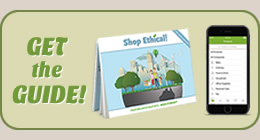“Flystrike is a major problem for sheep in the Australian wool industry. When a strike occurs, blowfly eggs laid on the skin of the sheep hatch into larvae, which feed on the sheep’s tissue. Flystrike can produce inflammation, general systemic toxaemia, and even death. It is estimated that around 3 million sheep a year die as a result of flystrike in Australia (Wardhaugh and Morton, 1990).”
In an attempt to reduce the incidence of flystrike in Australia, the ‘Mules’ operation was introduced in the 1930s. Skin is sliced from the buttocks of lambs without anaesthetic to produce an area of bare stretched skin. Because the scarred skin has no folds or wrinkles to hold moisture and faeces, it is less attractive to blowflies. Over 20 million merino breed lambs are currently mulesed each year. Most will have their tail cut off and the males will be castrated (‘marked’) at the same time.
There is also no doubt that mulesing is extremely painful. In addition to the scientific measurement of highly elevate cortisol levels in mulesed lambs, researchers have also measured behavioural indicators.
In 2004 the Australian wool industry, concerned by the threat to their international wool markets due to revelations about the prevalence of this mutilation to lambs, and newly challenged by international animal rights group PETA, set itself a deadline of 2010 to phase out the practice. Since 2004 industry and government funding has been significantly increased to find alternate methods to reduce flystrike incidence (other than via mulesing). See article ‘China seeks non-mulesed wool supply assurance‘.
In 2006 a new ‘appendix’ to the Code of Practice for the Welfare of Animals – the Sheep, was introduced. “It provides further guidance on the best mulesing method, but is a voluntary code. Because mulesing is described in this code and is thus considered an ‘acceptable husbandry’ practice, it is therefore exempt from the cruelty provisions of animal welfare laws. Mulesing contractors – who go onto farms to mules (tail dock and castrate) lambs – are now required to be ‘accredited’ and new training courses have been introduced in the last two years. Farmers who mules their own lambs need not be trained and accredited until the end of 2008.”
In March 2008 the NSW Farmers Association called for an immediate ban on mulesing in order to stave off threatened boycotts of Australian wool by up to 60 foreign (mostly European) retailers following further negative publicity in Sweden and other Scandinavian countries. On the same day the Western Australian Department of Agriculture announced that it would end mulesing of lambs on its research stations forthwith”.
The Australian Wool Industry were stating they would phase out mulesing by 2010 but so far this has not been achieved
See 2009 article ‘Wool from non-mulesed sheep rising each year‘.
To explore the difficulties in solving a problem like mulesing, see Global Mail article ‘The End Of The Sheep’s Back‘ (December 2012), with ‘Mulesing Sheep – It’s Complicated‘ video.
- If you choose to buy wool products, enquire of the retailer whether the wool is ethically sourced – from sheep that are not mulesed.
- Find brands and retailers specialising in supplying wool certified as non-mulesed at The NewMerinos, Plevna Downs, The Merino Company
- See Alternatives to Wool at the Animals Australia Unleashed Faux Shopping Guide



